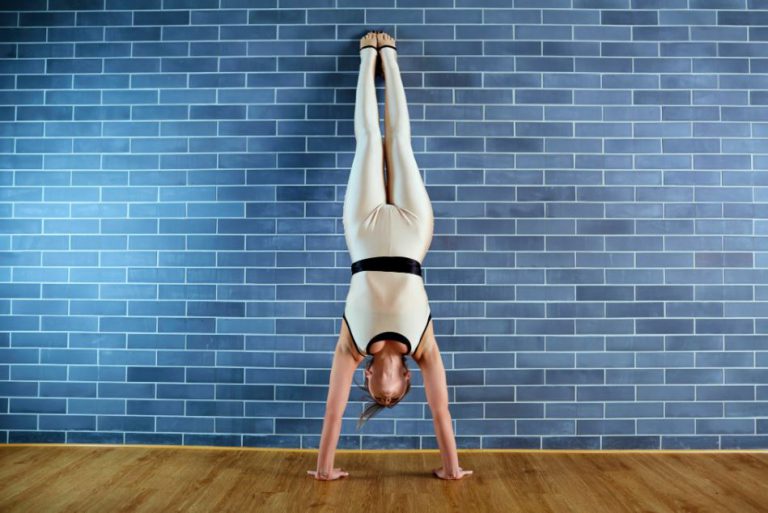Anulom Vilom Pranayama: Steps, Benefits, and Precautions
Anulom Vilom Pranayama, often referred to as alternate nostril breathing, is a powerful yogic breathing technique that has been practiced for centuries. Originating from the ancient tradition of yoga, this pranayama is known for its myriad of health benefits and its ability to bring balance to the mind and body. In this comprehensive guide, we will explore the steps, benefits, and precautions associated with Anulom Vilom Pranayama.
Steps to Practice Anulom Vilom Pranayama:
-
Find a Comfortable Seated Position:
- Sit in a comfortable and stable cross-legged position. Ensure that your spine is erect and your shoulders are relaxed.
-
Nasal Cleansing:
- Begin by closing your eyes and taking a few deep breaths to relax.
- Close your right nostril with your right thumb and inhale slowly and deeply through your left nostril.
- Now, close your left nostril with your right ring finger, release your right nostril, and exhale completely.
- Inhale deeply through your right nostril while keeping your left nostril closed.
- Close your right nostril again, release your left nostril, and exhale completely.
- This completes one cycle of Anulom Vilom.
-
Repeat the Cycle:
- Continue this rhythmic alternate nostril breathing, ensuring that each inhalation and exhalation is slow, deep, and controlled.
- Aim for 10-15 minutes of practice initially, gradually increasing the duration as you become more comfortable.
-
End with Deep Breaths:
- After completing the desired number of cycles, release both nostrils and take a few deep breaths with both nostrils open.
Benefits of Anulom Vilom Pranayama:
-
Stress Reduction:
- Anulom Vilom Pranayama helps in calming the nervous system, reducing stress and anxiety levels.
-
Improved Respiratory Health:
- The controlled and deep breathing involved in this pranayama enhances lung capacity, purifies the respiratory system, and can be beneficial for those with respiratory issues.
-
Enhanced Mental Clarity:
- The alternate nostril breathing pattern is believed to balance the two hemispheres of the brain, promoting mental clarity, focus, and improved cognitive function.
-
Regulation of Blood Pressure:
- Regular practice of Anulom Vilom has been associated with the regulation of blood pressure, making it beneficial for individuals dealing with hypertension.
-
Detoxification:
- The controlled breathing helps in the elimination of toxins from the body, promoting overall detoxification.
-
Balanced Energy Flow:
- Anulom Vilom is thought to balance the flow of energy (prana) in the body, fostering a sense of equilibrium and well-being.
-
Enhanced Immune Function:
- The improved respiratory and circulatory functions contribute to a strengthened immune system, making the body more resilient to illnesses.
-
Improved Sleep Quality:
- Regular practice of this pranayama has been linked to better sleep patterns and can be beneficial for those struggling with insomnia.
Precautions to Take:
-
Consultation with a Healthcare Professional:
- Before starting any new breathing exercise or yoga retreat practice, especially if you have pre-existing health conditions, consult with a healthcare professional to ensure that it is safe for you.
-
Gradual Progression:
- If you are a beginner, start with a few minutes of practice and gradually increase the duration as your comfort and proficiency grow.
-
Awareness of Body Signals:
- Pay attention to how your body responds during and after the practice. If you experience any discomfort, dizziness, or shortness of breath, stop and consult a healthcare professional.
-
Pregnancy:
- Pregnant women should exercise caution and seek guidance from a qualified yoga instructor or healthcare provider before practicing Anulom Vilom Pranayama.
-
Respiratory Conditions:
- Individuals with respiratory conditions such as asthma should practice under the guidance of a qualified yoga instructor and should avoid forceful breathing.
Anulom Vilom Pranayama, with its simple yet profound technique, offers a holistic approach to well-being. By incorporating this ancient practice into your daily routine, you can experience a range of physical, mental, and emotional benefits. Remember to approach the practice with patience, mindfulness, and a commitment to your own health. As with any yogic practice, consistency is key, and over time, you may find Anulom Vilom becoming an integral part of your journey towards a healthier and more balanced life.
Advanced Tips for Anulom Vilom Pranayama:
-
Incorporate Breath Retention (Kumbhaka):
- Once you feel comfortable with the basic practice, you can gradually introduce breath retention between inhalation and exhalation. This advanced technique, known as Kumbhaka, enhances the benefits by increasing lung capacity and improving oxygen utilization.
-
Focus on Bandhas:
- Engage the bandhas, or energy locks, during Anulom Vilom to amplify its effects. The Jalandhara Bandha (chin lock) and Uddiyana Bandha (abdominal lock) can be subtly applied to channel and retain energy within the body.
-
Integrate Meditation:
- Combine Anulom Vilom with mindfulness meditation. As you breathe through alternate nostrils, concentrate on the sensation of the breath, fostering a deeper connection between the mind and body.
-
Practice Regularly but Mindfully:
- Consistency is crucial, but quality matters more than quantity. Practice Anulom Vilom regularly, but be mindful of your body’s signals. If you feel fatigued or strained, take a break and resume when you’re ready.
Scientific Perspectives on Anulom Vilom Pranayama:
Research studies have explored the physiological effects of Anulom Vilom Pranayama, shedding light on its positive impact on the autonomic nervous system. The rhythmic alternate nostril breathing has been associated with increased parasympathetic activity, promoting relaxation and reducing the dominance of the sympathetic (fight-or-flight) response.
Furthermore, studies suggest that regular practice of Anulom Vilom may contribute to improved cardiovascular function, with positive effects on heart rate variability and blood pressure regulation. The conscious control of breathing patterns appears to influence various physiological parameters, offering a non-pharmacological approach to cardiovascular health.
Common Questions about Anulom Vilom Pranayama:
-
Can Anulom Vilom be practiced by beginners?
- Yes, Anulom Vilom is suitable for beginners. Start with a few minutes and gradually increase the duration as you become more comfortable. Seek guidance from a qualified yoga instructor if needed.
-
How often should one practice Anulom Vilom?
- For optimal benefits, aim for a daily practice. Even 10-15 minutes a day can make a significant difference. Consistency is key.
-
Are there any specific times for practicing Anulom Vilom?
- Traditionally, it is recommended to practice pranayama during the early morning or evening. However, the key is to find a time that suits your schedule and allows for a focused, uninterrupted practice.
-
Can Anulom Vilom be practiced by people with respiratory conditions?
- While Anulom Vilom can be beneficial for respiratory health, individuals with conditions like asthma should practice under the guidance of a qualified instructor and avoid forceful breathing.
Anulom Vilom Pranayama stands as a testament to the ancient wisdom of yoga, offering a simple yet profound technique for holistic well-being. By delving into its advanced aspects, understanding its scientific underpinnings, and addressing common queries, practitioners can deepen their connection with this transformative practice. Whether you’re a beginner or an experienced yogi, Anulom Vilom has the potential to become a cornerstone of your wellness journey, providing a pathway to balance, vitality, and inner peace. As with any aspect of yoga, approach it with openness, curiosity, and a commitment to self-discovery.







